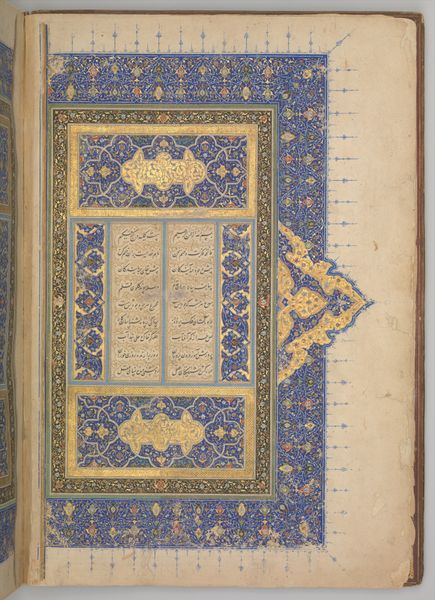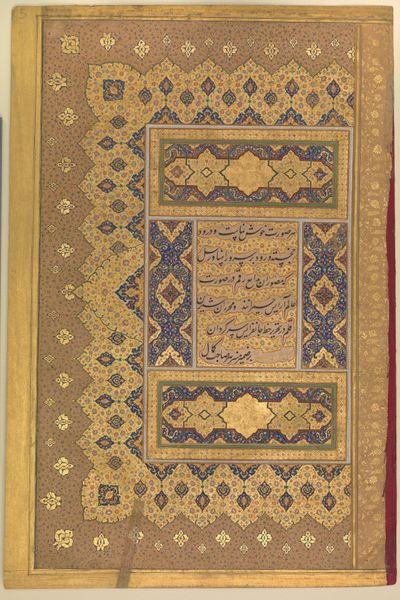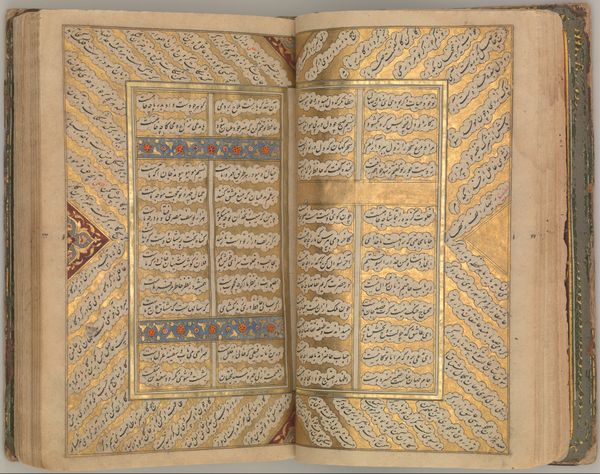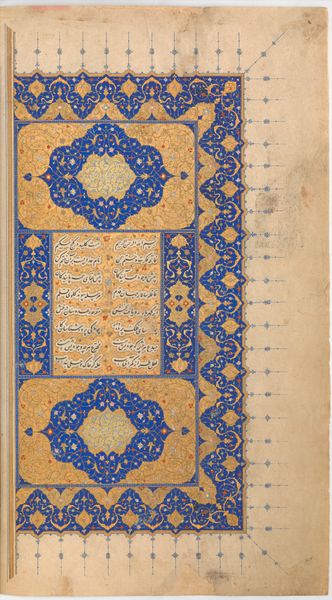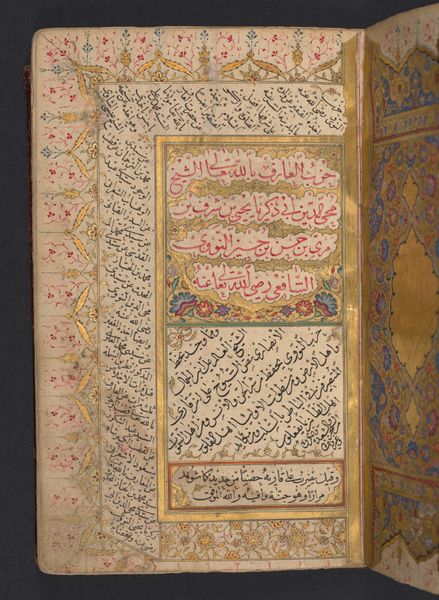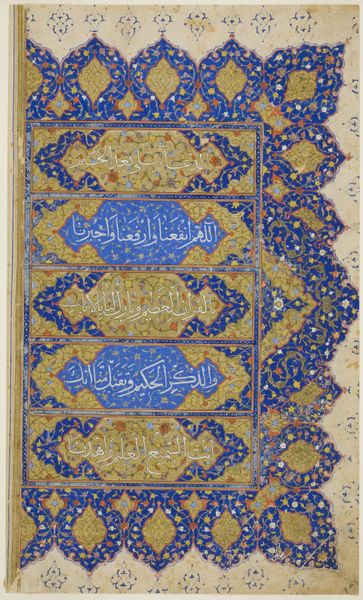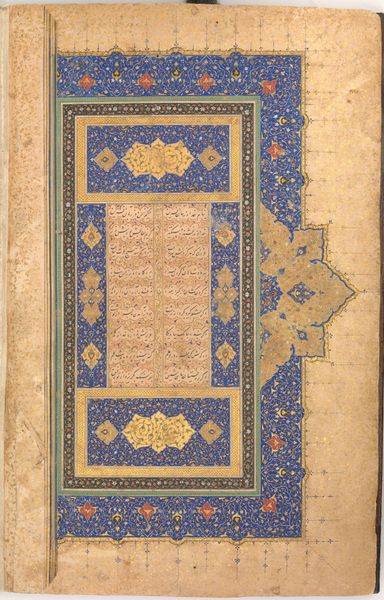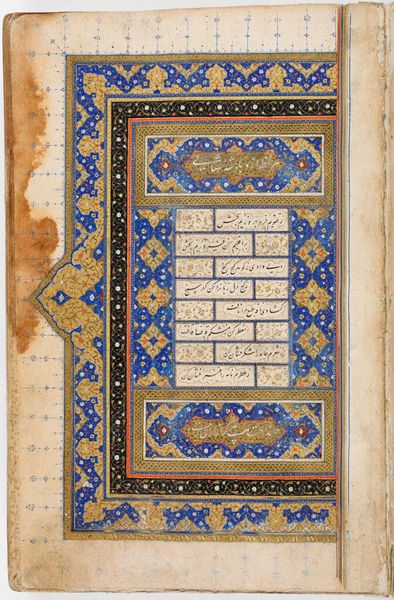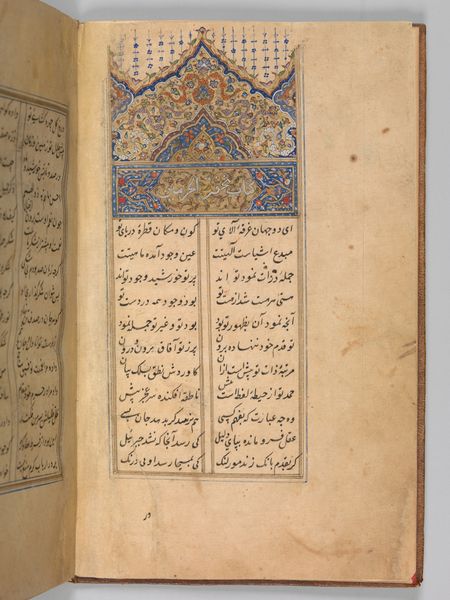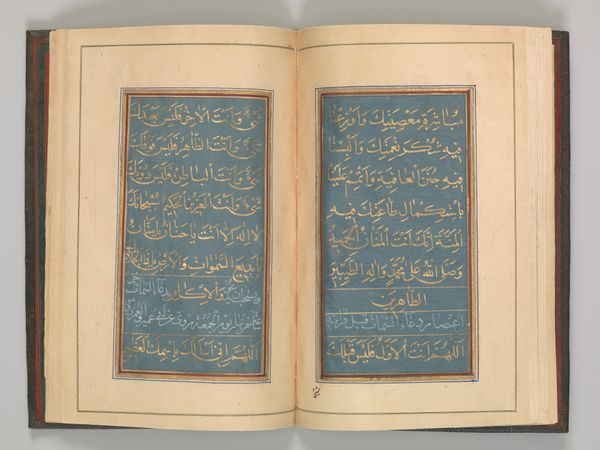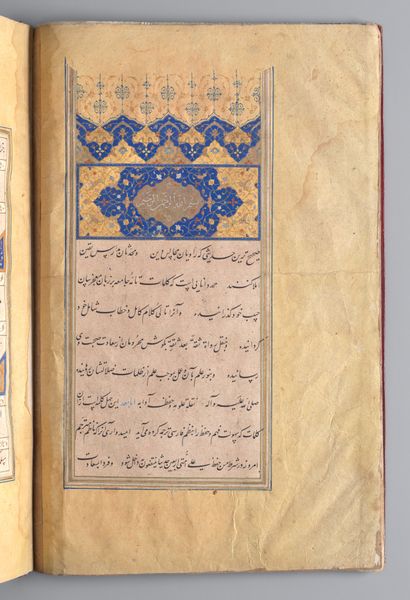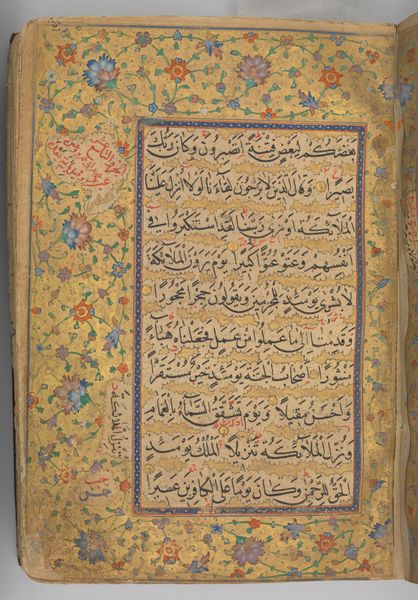
mixed-media, textile, paper, ink
#
mixed-media
#
textile
#
paper
#
ink
#
islamic-art
#
miniature
#
watercolor
#
calligraphy
Dimensions: H. 8 3/4 in. (22.2 cm) W. 5 3/4 in. (14.6cm)
Copyright: Public Domain
Curator: Before us, we have a page from the "Anthology of Persian Poetry" dating back to the 16th century. The calligraphy and illumination are attributed to Amir Shahi of Sabzavar. It is currently held at the Metropolitan Museum of Art. Editor: The composition, though intricate, feels rather restrained to me at first glance. There’s a noticeable order in the vertical arrangement of the text blocks and decorative elements that’s undeniably calming. Curator: The balance achieved through that vertical organization is a deliberate construction. Consider how the illuminator uses varying shades of blue and gold. The patterns around the calligraphic panels aren’t just decorative flourishes, but integral to understanding the hierarchy of visual elements within the page. It is, after all, executed using a combination of ink, opaque watercolor, and gold on paper. Editor: Right. Beyond the exquisite balance, what does stand out for me are the cultural layers—Persian poetry carefully written within such ornate borders. Who was its intended audience, and what dialogues about beauty, power, and spirituality did it incite? Curator: Within Islamic art traditions, calligraphy transcends simple communication, functioning as a spiritual practice. The script's elegant curves mirror cosmic rhythms. Also, note the deliberate gilding and use of precious pigments within a very defined grid. Editor: Yes, these gilded verses aren't just aesthetically pleasing; they assert an authority about which bodies were considered noble enough to handle the textile on which this was printed. Did the selection of particular poetic passages reinforce prevailing social orders? Or were there more rebellious readings that these artworks facilitated in salon culture? Curator: In truth, the structural refinement and calligraphic design guide the viewer's gaze—a process in and of itself! It represents more than merely pretty patterns. Editor: Understood! Perhaps through our exchange, our listeners are now seeing both the formal elegance and the whispering contexts that such artworks embed within the fabric of time. Curator: Agreed, and by understanding how this page is both structure and story, the viewers might be moved to contemplate art and design from the other side of the world!
Comments
No comments
Be the first to comment and join the conversation on the ultimate creative platform.
